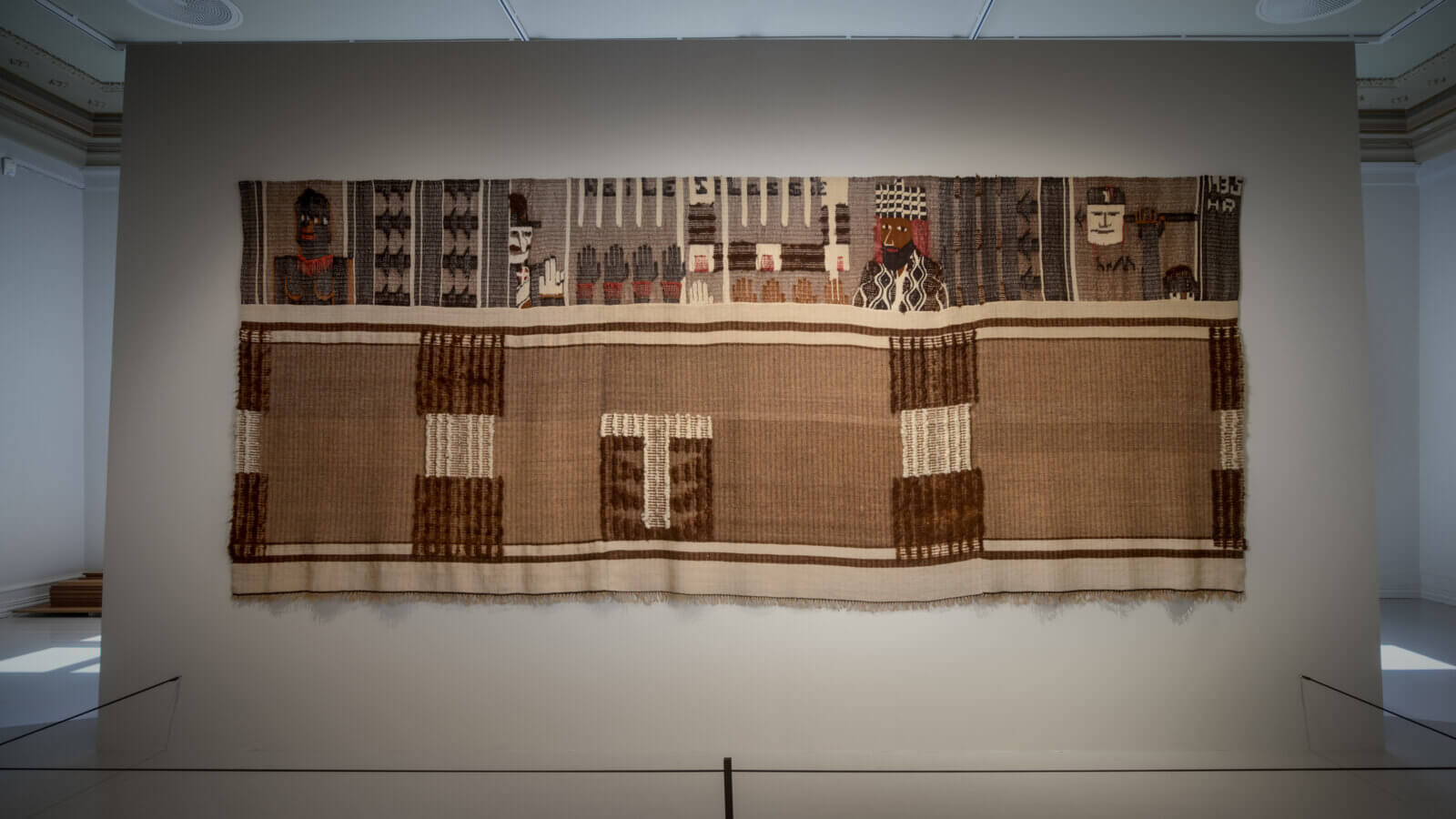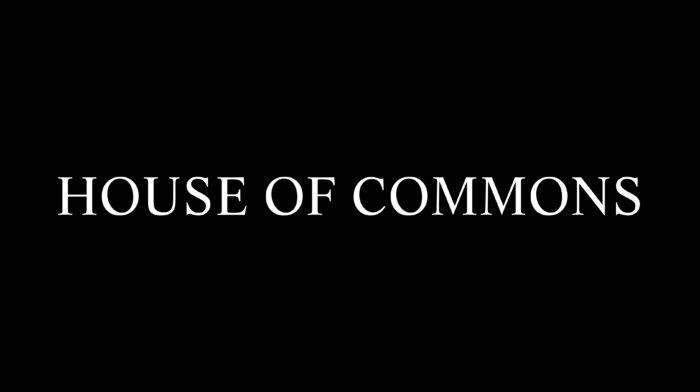Described as one of the most influential artists of the 20th century, Hannah Ryggen (b. 1894, Malmö, Sweden, d. 1970, Trondheim, Norway) was a self-trained textile artist. Her practice used this traditional medium to explore a new range of motifs that incorporate elements from folk art and mythology with contemporary issues. Her work is best represented by her monumental tapestries, spectacular visual attacks that weave powerful, politically inspired stories that uncompromisingly share her political views. In 1964, Ryggen was the first woman to represent Norway at the Venice Biennale and her work was exhibited widely during her lifetime.
Etiopia / Ethiopia, 1935
Ethiopia is one of Hannah Ryggen’s earliest anti-war tapestries and an explicit anti-fascist statement, made in direct response to Italy and the Mussolini government’s invasion of Ethiopia on 3 October 1935. By June 1936, Italian forces had captured the capital of Addis Ababa and proclaimed Mussolini as the king of Ethiopia. The invasion did not provoke meaningful sanctions or action, despite the fact Italy was declared guilty of aggression by the League of Nations, which was founded to maintain peace after the First World War. Mussolini infamously predicted this inaction in a radio broadcast held on 2 October, one day before the invasion, saying: “Until there is proof to the contrary, I refuse to believe that the authentic people of France will want to spill blood and send Europe to its catastrophe for the sake of a barbarian country unworthy of ranking among civilized nations.” In the same speech Mussolini also stated: “This manifestation signifies that the tie between Italy and fascism is perfect, absolute, unalterable”. In Ryggen’s tapestry, Mussolini is portrayed with his decapitated head impaled on a spear. In the centre, Ethiopia’s Emperor, Haile Selassie, and Italy’s ambassador are also depicted. The work was seen as too provocative to be fully exhibited at the World Fair in Paris in 1937 and the section with Mussolini’s impaled head was hidden. Even so, audiences were taken aback by its explicit political stance. Notably, while Ethiopia was shown in the Norwegian Pavilion, Pablo Picasso’s Guernica (1937) was exhibited at the same time in the neighbouring Spanish Pavilion.

Images:
An installation photo of Hannah Ryggen’s Ethiopia.
Photo: MOMENTUM.
An installation photo of Hannah Ryggen’s Ethiopia with Renée Green’s Space Poem #5 (Years & Afters) (2015) in the background.
Photo: MOMENTUM. Courtesy of the practitioners.



